Commercial District in Northeast Portland
Located in Northeast Portland along NE Alberta Street, the Alberta Arts District is within the Vernon, Concordia, and King neighborhoods. Though “Alberta” by name is not technically recognized as a standalone neighborhood, it’s surrounded by a bunch of lovely neighborhoods including Woodlawn, Vernon, Alameda, and Cully.
FROM PORTLAND WITH LOVE
Let's Tour The Neighborhood
Alberta Arts District Real Estate & Walkability Score
The charm of Alberta pops immediately when you arrive in the district. The architectural style is reminiscent of older East Portland styles such as cottages, Craftsman-style bungalows, and other mid-sized, one and two-story homes. You’ll feel like you’ve been transported to a new world.
ALBERTA ARTS DISTRICT
Date Night: Eat & Drink
Alberta has a ton of tasty and unique places to dine and drink for any time of the day. You’ll be able to enjoy everything from delicious vegan options to incredible cuisines from all over the world.
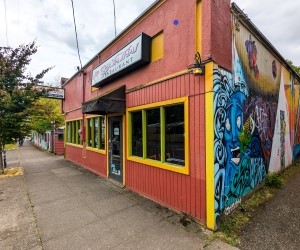
Cha’Ba Thai: Brightly painted eatery with a lengthy menu of Thai standards and a large dog-friendly patio.
Service Options: Dine-in · Takeout · Delivery
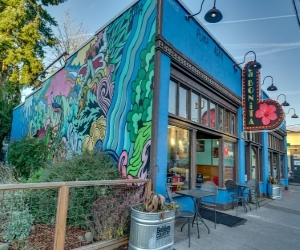
La Bonita: Traditional Mexican dishes are carefully presented at this casual, family-owned establishment.
Service Options: Dine-in · Takeout · Delivery
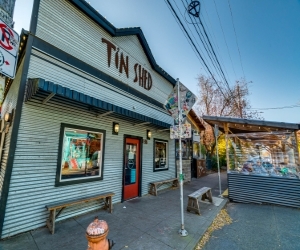
Tin Shed Garden Café: Small, dog-friendly place specializing in American food, offering a covered patio and a canine menu.
Service Options: Dine-in · Takeout · No Delivery
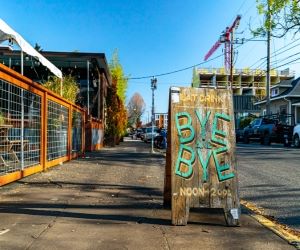
Bye and Bye: Artful, dimly lit hipster bar with expansive patio serving Southern-inspired vegan food until late.
Service Options: Dine-in · Takeout · No-Contact Delivery
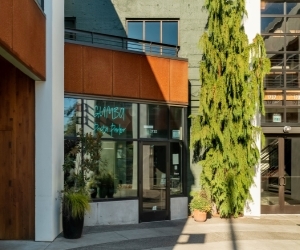
Gumba: Outdoor Italian food vendor serving pasta and small plates with rotating specials and catering options.
Service Options: Dine-in · Takeout · Delivery
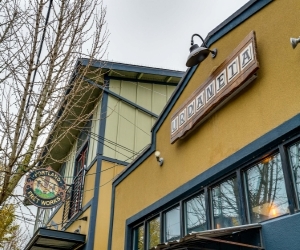
Urdaneta: Comfortable, chic choice for creative Spanish small plates paired with craft cocktails and wine.
Service Options: Dine-In · Curbside Pickup
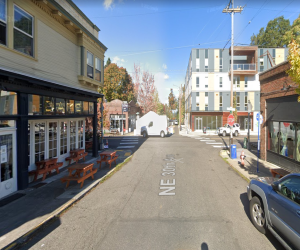
Expatriate: Hip lounge serving global bar bites and swanky cocktails amid a black walnut bar and Asian touches.
Service Options: Dine-in · Takeout · Delivery
Address: 5424 NE 30th Ave, Portland, OR 97211
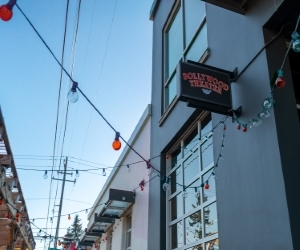
Bollywood Theater: Casual stop for Indian street-food classics, with old Bollywood films showing on a wall.
Service Options: Dine-in · Takeout · Delivery
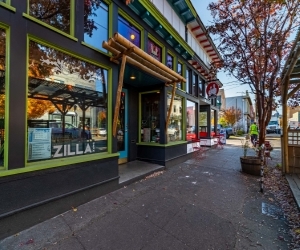
Zilla Sake: Bohemian bar with local art on the walls serving sushi and an acclaimed selection of sakes.
Service Options: Dine-in · Takeout · No Delivery
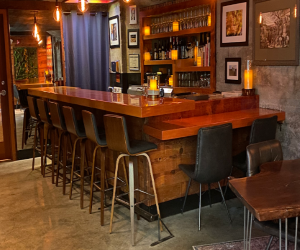
Les Caves & Le Clos: Subterranean wine bar serving rare and natural wines, plus limited snacks, in a rustic cave.
Service Options: Dine-In · Curbside Pickup · No Delivery
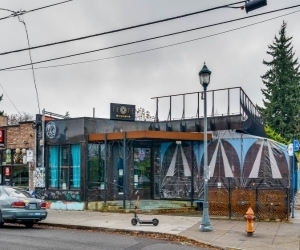
Teote Mezcaleria: Latin American restaurant that is tasty and fun. Restaurant offers family meals, gift cards, and catering.
Service Options: Dine-in · Takeout · No-Contact Delivery
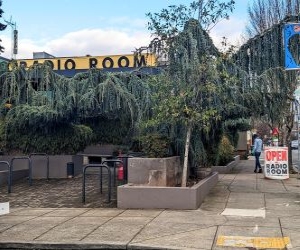
Radio Room: Remodeled gas station known for its American fare, weekend Bloody Mary bar and heated rooftop patio.
Service Options: Dine-in · Takeout · No Delivery
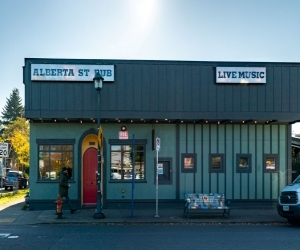
Alberta Street Pub: Old-school watering hole with live music, a covered patio and a menu of classic comfort foods.
Service Options: Dine-In · Takeout · No Delivery
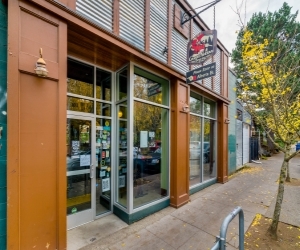
Great Notion Brewing – Alberta: House-brewed drafts and creative comfort grub served in a lofty, industrial-chic taproom with a patio.
Service Options: No Delivery
The Alberta neighborhood has a warm and welcoming community that will provide fun and engaging learning for grades K-12.
Schools
K-8:
Dr. Marin Luther King Jr Elementary School: 4906 NE 6th Ave, Portland, OR 97211 | 503-916-6456 | Website
Vernon Elementary School: 2044 NE Killingsworth St, Portland, OR 97211 | 503-916-6415 | Website
Faubion School: 2930 NE Dekum St, Portland, OR 97211 | 503-916-5686 | Website
High Schools:
Jefferson High School: 5210 N Kerby Ave, Portland, OR 97217 | 503-916-5180 | Website
Leodis V. McDaniel High School: 2735 NE 82nd Ave, Portland, OR 97220 | 503-916-5220 | Website
Community Resources
Arts Resources:
Alberta Main Street
Last Thursday
Alberta Street Fair – Check Back for 2024’s Date!
Neighborhood Resources:
NE Coalition of Neighborhoods (NECN)
Concordia Neighborhood Friends of Trees
TOUR THIS NEIGHBORHOOD
ALBERTA ARTS DISTRICT
Shopping & Businesses
With a prominent arts culture, Alberta is a beacon in the Portland community for lovers of books, artwork, fashion, and footwear.
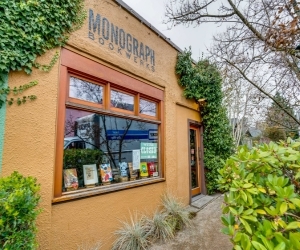
Monograph Bookwerks: Portland’s art bookstore for new and used books on contemporary art, architecture and design, plus ephemera, unique objects and artworks.
Service Options: In-Store Shopping · Curbside Pickup
Address: 5005 NE 27th Ave, Portland, OR 97211
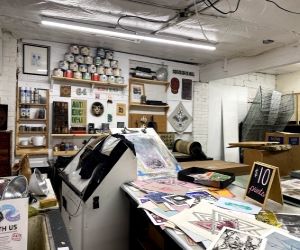
Flight 64: Founded in 2003, Flight 64 is a member-run 501(c)(3) non-profit printmaking studio. They support print artists of all types by providing the tools they need to develop their work. The Flight 64 member gallery, located inside the studio, hosts monthly exhibits on most Last Thursdays from 6-9pm.
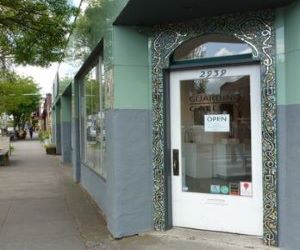
Guardino Gallery: Located in the Alberta Art’s District, on Alberta Street in Portland OR, they feature monthly exhibitions of local fine artists.
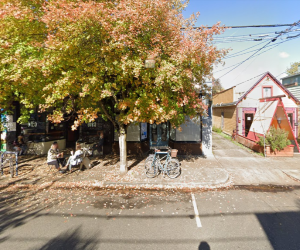
Nucleus: Since October of 2004, Nucleus has strived to be a welcoming gathering place for the art loving community by offering quality art, art-related goods, and rarities. Focusing primarily on gallery exhibits, they have also had benefit auctions, product signings, music events, and artist lectures.
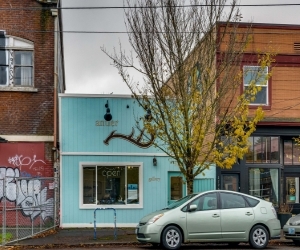
Antler: Antler Gallery is located in the Alberta Arts District of Portland, Oregon and is co-owned by Susannah Kelly and Neil Perry. Susannah and Neil curate the gallery together, only showcasing artists and works that they both love. Antler has a strong focus on nature, and partners with the Audubon Society of Portland every January for a benefit that raises awareness and aids in protection of endangered species.
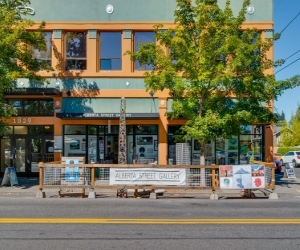
Alberta Street Gallery: A vibrant, professional artist collective featuring high quality work across many mediums and styles ranging from paintings to sculpture, ceramics, metalwork, photography, fiber, glass and jewelry.
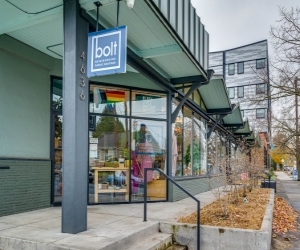
Bolt Neighborhood Fabric Boutique: A collection of natural, sustainable, apparel and quilting fabric and sewing supplies, thoughtfully curated for home sewers.
Service Options: In-Store Shopping · Curbside Pickup
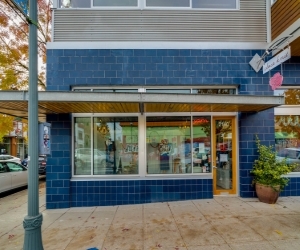
Close-Knit: Local hobby shop specializing in knitting and crocheting yarn, supplies and tools, plus workshops.
Service Options: In-Store Shopping · In-Store Pickup
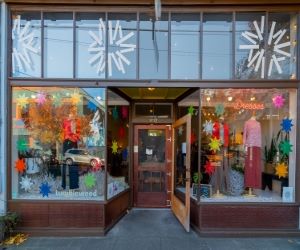
Tumbleweed: Chill boutique for decor and hip, indie-label women’s clothes, including the shop owner’s own designs.
Service Options: In-Store Shopping · Curbside Pickup · Delivery

Amelia: Amelia is located in the Alberta Arts District in Northeast Portland, Oregon. They’re proud to be part of this vibrant, innovative community with some of the city’s best shopping a stone’s throw from our doorstep. Amelia is the owner and designer of the in-house line. Most days she can both be found in the shop, either meeting customers on the shop floor or upstairs in the production studio sewing dresses and tailoring customer’s new favorites.
Service Options: In-Store Shopping · In-Store Pickup
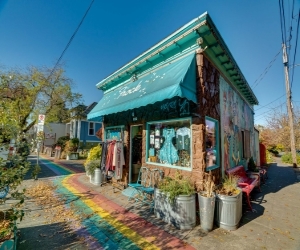
Frock Boutique: Store stocking clothing and accessories for women, men and kids made by local, independent designers.
Service Options: In-Store Shopping
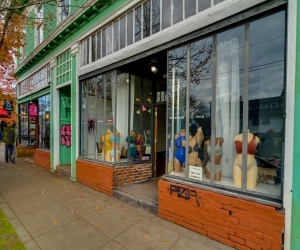
The Pencil Test: Cheeky lingerie boutique specializing in bras sized D and above, plus fitting services.
Service Options: In-Store Shopping · Curbside Pickup
Address: 1915 NE Martin Luther King Jr Blvd, Portland, OR 97212

Grasshopper Boutique: Children’s emporium specializing in organic and American-made apparel, nontoxic toys, books and decor.
Service Options: In-Store Shopping · Curbside Pickup · Delivery
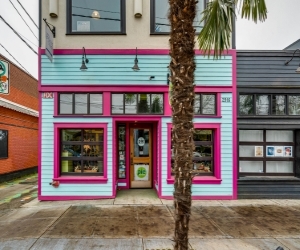
Pie Footwear: Shoe merchant with an inventory of eco-friendly and vegan brand name styles for both men and women.
Service Options: In-Store Shopping · In-Store Pickup
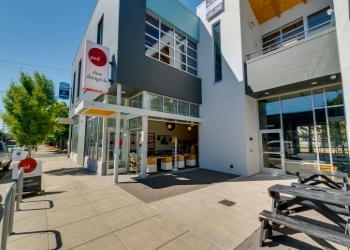
pedX Shoe Shangri La: Stylish emporium showcasing a variety of brand-name women’s shoes, jewelry, handbags, and accessories.
Service Options: In-Store Shopping · Curbside Pickup · Delivery
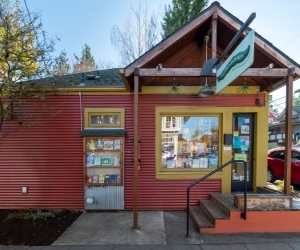
Green Bean Books: Bright shop featuring children’s books and educational toys, plus events and story hours.
Service Options: In-Store Shopping · In-Store Pickup

Collage: Supply shop for drawing, painting, paper crafting, jewelry making, and mixed media goods.
Service Options: In-Store Shopping · Curbside Pickup
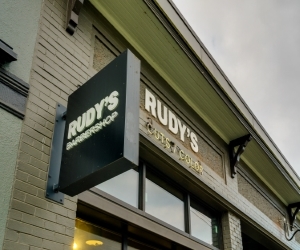
Rudy’s Barbershop: In 1993, Rudy’s Barbershop opened their first shop in the grungy heart of Seattle driven by a simple idea: create a place where all of their friends could hang out and leave feeling better than when they arrive. They didn’t know they’d end up setting a new standard for hair. They didn’t even know they’d make it past their first month. Their take on the modern barbershop caught on, and Rudy’s started to grow. Along the way they sold tickets for some well-known local bands, tattooed customers, made art with people we liked, created their own line of product, and cut a lot of heads. The decades have passed quickly, and a lot has changed, but they’re still the same Rudy’s – always engaging, a little different, and a comfortable place you know and love. For a quarter of a century they’ve been more than just a barbershop, and that’s worth celebrating.

Alberta Market: Convenience store for basics, snacks, beer and wine, and fast food including chicken wings.
Address: 909 NE Alberta St, Portland, OR 97211
Alberta Arts District
Parks & Green Spaces
Despite there being one park within the boundaries of Alberta Arts District, King School Park, there are plenty of wonderful parks you can find in the immediate surrounding the area.
King School Park— Named after Martin Luther King Jr. this 2.64-acre park is located at the elementary school of the same name. Equipped with a track, a playground, paved and unpaved paths, soccer and softball fields, tennis backboard, and a basketball court, this park has a variety of fun options for everyone!
Alberta Park— Looking for a great park for you and your dog? Alberta Park has got you covered! Coming in at 16-acres, it features a basketball court, off-leash dog area, picnic tables, paths, a playground, a tennis court, softball field, and water feature.
Wilshire Park— Are you in need of a park where you can break a sweat and become one with nature? Wilshire Park is the place for you. This 14.3-acre park is filled with sports courts and fields, as well as a stunning nature patch with flowering native plants. A great park to spend some time on your own, or with friends and family!
ALBERTA ARTS DISTRICT
Things to Do and See in Alberta Arts District
From awe-inspiring public artworks to magnificent street fairs, Alberta has an incredible amount of fun and community-based events happening all year!
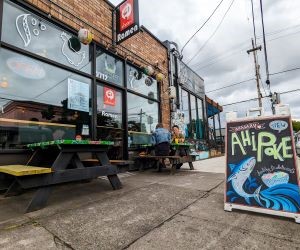
Akasaru Ramen and Poke: Classic Japanese noodle soups and izakaya dishes are served in a cozy storefront with a monkey mural.
Service Options: Dine-In · Takeout · No Delivery
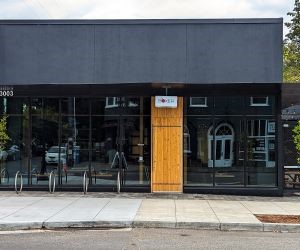
Boxer Ramen: Locals line up for bowls of ramen & other Japanese eats at this pint-sized, no-frills destination.
Service Options: Dine-In · Takeout · No Delivery
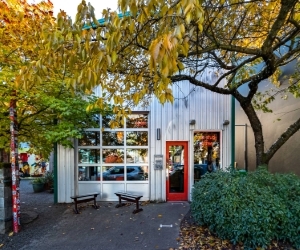
Case Study Coffee Roasters: Relaxed coffee shop for house-roasted, seasonal coffee blends made with varied brewing methods.
Service Options: Dine-In · Takeout · No Delivery
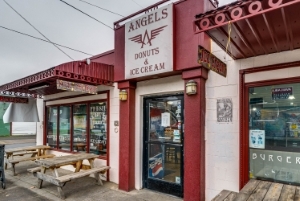
Angel’s Donuts and Ice Cream: Old-school bakeshop dispensing ice cream and housemade donuts and fritters in a counter-serve setting.
Service Options: Dine-in · Takeout · Delivery
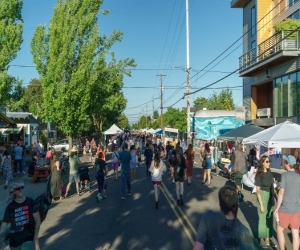
Last Thursday: This boisterous street fair attracts independent artists, performers, local bands, troupes of acrobats, buskers, makers and more to celebrate their art on Northeast Alberta Street. Held year-round, the event is biggest from June through August, when the street is closed to traffic during the festivities from 15th Avenue to 30th Avenue. Last Thursday is an arts and culture experience that takes place on Alberta Street in Portland, Oregon every Last Thursday of the Month. Jan. 27–Dec. 29, 2022 Days vary, 6:00pm–9:00pm
NE Alberta St, Portland, OR | Website
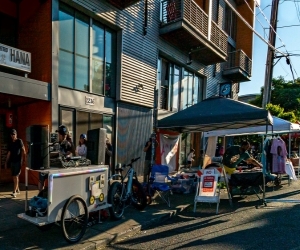
First Thursday in the Pearl District: Started in 1986, First Thursday in the Pearl is a district-wide celebration that occurs on the first Thursday of each month. Originally a gathering of art collectors and dealers, the celebration has grown to a monthly event of over ten thousand people that includes art enthusiasts, wine aficionados, and scenesters looking to see and be seen. Art galleries in the district are all open late into the evening for receptions and new show openings. Many of the galleries offer food and drink while the artists showing are available to meet and discuss their work. On pleasant evenings, the streets are literally packed with artists selling their creations and musicians and bands playing live music on many of the closed-off streets. Parking gets very difficult in the area on First Thursday. It is recommended to take public transportation to the Pearl, or park nearby and walk into the neighborhood.
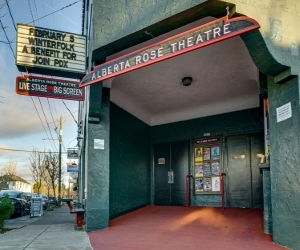
Alberta Rose Theatre: Alberta Rose Theatre, formerly known as the Alameda Cinema, is a historic theatre in Portland, Oregon’s Concordia neighborhood, in the United States.

Alberta Street Fair: The annual Alberta Street Fair offers an eclectic mix of activities and events that could only be found on Alberta Street. Enjoy multiple stages of live music, a kids parade, local artists, great food, creative vendors, two beer gardens, pedicabs and lots of hands-on fun. Don’t miss creative fun all day and music until 9 at night. A suggested $2 donation supports building a vibrant, creative, equitable, and sustainable Alberta Street. Donations are accepted at the information booth, the beer gardens, or you can make your donation online here.
Northeast Alberta Street between N.E. 11th and 30th Avenues
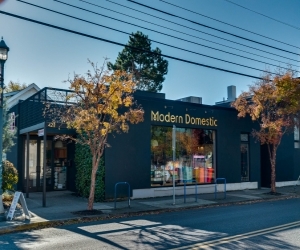
Modern Domestic: Modern Domestic transforms substance into style through a curated fabric selection, instruction for sewists of all stripes, and an inspiring emphasis on community. They deliver exceptional sewing products made available to you in the heart of the Alberta District in Portland, Oregon.
Service Options: In-Store Shopping · Curbside Pickup
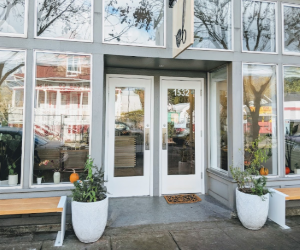
Blendily: Stands for blended splendidly. Their products are made with fresh, organic, and wild ingredients found locally and sourced sustainably.
Service Options: In-Store Shopping · Curbside Pickup · Delivery
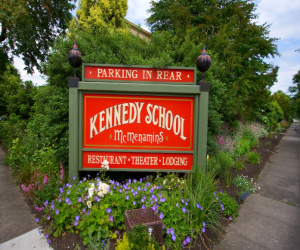
McMenamin’s Kennedy School: 3-star hotel.
Address: 5736 NE 33rd Ave, Portland, OR 97211
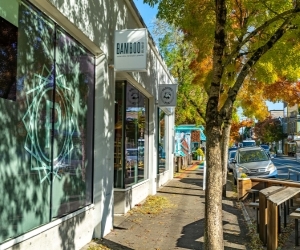
Bamboo Sushi: Modern restaurant specializing in sustainable sushi, also offering beer, saké and cocktails.
Service Options: Dine-In · Curbside Pickup · No-Contact Delivery
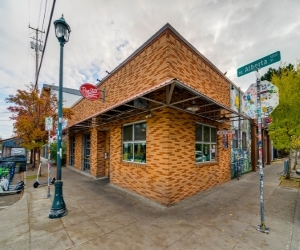
Pine State Biscuits: Casual eatery serving biscuits and gravy, biscuit sandwiches and buttermilk breaded chicken.
Service Options: Dine-In · Curbside Pickup · No-Contact Delivery
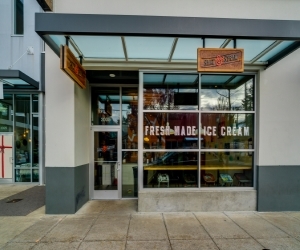
Salt & Straw: Small, hip ice cream parlor featuring unique, housemade flavors like blue cheese and olive oil.
Service Options: Takeout · No-Contact Delivery
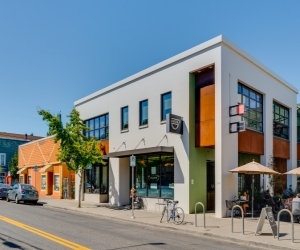
Barista: Laid-back outpost offering carefully presented coffee drinks and a selection of light bites.
Service Options: Dine-In · Takeout · No Delivery
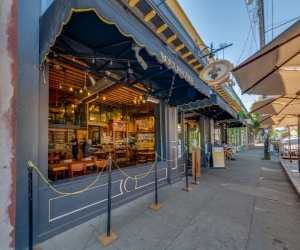
Petite Provence Boulangerie & Patisserie: French-inspired cafe offering meals from breakfast to dinner, plus baked goods and espresso drinks.
Service Options: Dine-In · Takeout · Delivery
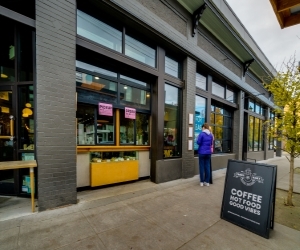
Proud Mary Café: Hip Aussie-style cafe in an industrial-chic space offering craft coffee, breakfast, and smoothies.
Service Options: Dine-In · Takeout · Delivery
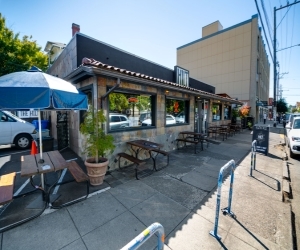
The Hilt: Bar with a big patio and sidewalk seating is known for its house-infused spirits and varied Greek menu.
Service Options: Dine-In · Takeout · Delivery
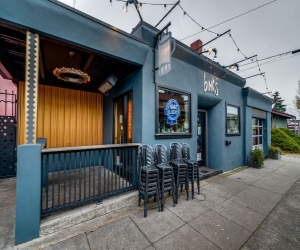
Binks: Laid-back neighborhood watering hole with pizza, house-infused spirits and a fireplace on the patio.
Service Options: Dine-In · Takeout · No Delivery
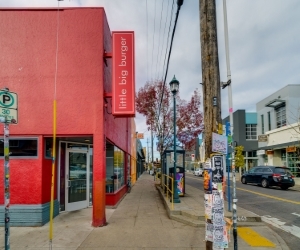
Little Big Burger: Founded in Portland, Oregon, Little Big Burger is a fast-casual restaurant concept offering fresh, high-quality cooked-to-order burgers, truffle fries and root beer floats. After opening its first location in the Pearl District in 2010, Little Big Burger has developed a cult-like following by offering a tasty menu focused on quality, local ingredients, served up in a fun and hip atmosphere.
Service Options: Dine-In · Takeout · No-Contact Delivery
Alberta Arts District
Nearby Neighborhoods
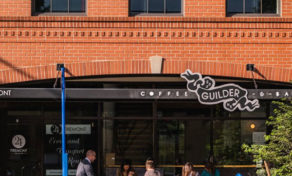
Alameda
Alameda is a beautiful neighborhood with quiet, tree-lined streets and some gorgeous homes, many on larger lots. Homes on Alameda ridge have a stunning view of Portland and the West hills.
Visit Neighborhood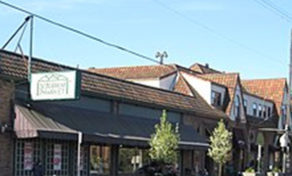
Beaumont-Wilshire
Beaumont-Wilshire is an older neighborhood with a strong sense of community. It has a nice mix of residential and commercial property. The main road through Beaumont-Wilshire neighborhood is NE Fremont Street, and the primary commercial focus is “Beaumont Village”, between NE 33rd and NE 50th.
Visit Neighborhood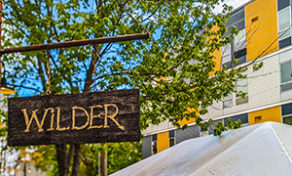
Concordia
Northeast Portland’s Concordia neighborhood has beautiful, historic homes with plenty of original character. Close to bustling Alberta Street, Concordia has fantastic dining and shopping options. It’s a great choice for those who value living in a walkable neighborhood.
Visit Neighborhood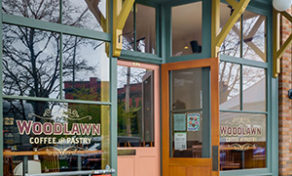
Woodlawn
This cozy community in Northeast Portland is home to gorgeous homes and tree-lined streets. It’s close to major highways so it’s easy to access Vancouver and inner Portland. With restaurants, parks, and a seasonal farmers market, Woodlawn is a beautiful neighborhood to call home.
Visit NeighborhoodHistory of the Alberta Arts District
Early Alberta
While the Alberta District was not officially given its name until around the turn of the 21st century, it has been a hub of innovators, activists, and creatives since day one. Since the first immigrants who came to the area in the 1800s, Alberta has always been a cultural force in Portland.
Named after Princess Alberta, the area was first established in the 1800s. However, it didn’t begin to take off until 1903, when streetcars came in. The impact of the streetcars cannot be overstated enough. After they arrived, many new businesses opened on the street, leading to more people visiting the area, and as a result, there was a ton of success for the stores. The gains in the business sector led to an increase in housing investment in the area as well.
With the neighborhoods in the area on the rise, many of the houses were occupied by Russian and German immigrants, and other families with smaller income levels. Essentially, these new neighborhoods became cities of their own, and flourished during this time.
Alberta Hits Hard Times
Through the 1940s, the Alberta area was thriving. However, it was during this decade that the once vibrant street began to change significantly. When Interstate Ave. became a major route to Vancouver, it drastically reduced the amount of customers Alberta was receiving. This was because Union Ave. used to be the main route to Vancouver, which lead a lot of folks to check out the stores on Alberta. Adding insult to injury, in 1948 busses replaced the streetcars that were vital to the foot traffic on the street. It was also during this time that large supermarkets and volume stores began to occupy storefronts on the street, leading smaller stores on Alberta to close because they simply could not compete with them.
The Vanport flood of 1948 had a devastating impact on Portland’s African American residents, causing many in the community to be displaced. As a result, a significant amount of African American’s moved to the neighborhoods surrounding Alberta St. It became a place where they could start to build a community again. Unfortunately, this would not last for long as those same residents were displaced again in the 1960s as a result of the construction of Interstate 5. The new freeway not only took away housing opportunities on Alberta, it also shifted car traffic away from the area, which led to less patrons on the street and a drop in investments in the surrounding neighborhoods.
Displacements continued with the construction of Emanuel Hospital and the Memorial Coliseum. Both projects caused the demolition of numerous homes, and over time, the area saw an increase in poverty, which then led to an increase violence, gangs, and vandalism.
This turbulent time created an unfortunate situation where banks refused to give loans for homes in the Alberta area, because they claimed it was of low value due to the demise of the community. With poverty rising and homes vanishing, businesses became vacant and boarded up. Due to the lack of activity and shopping, Alberta saw an increase in crime and the area became known as unsafe. The decline hit a tipping point in 1981 with the closure of the neighborhood Rexall Pharmacy, which was a staple in the area for 66 years.
Alberta’s Comeback
Deciding to act, members of the community stepped up and began an effort to bring Alberta back into the wonderful area they knew it could be. This initiative began with the formation of the Sabin Community Development Corporation (SCDC) and North/Northeast Economic Development Task Force (NNEDTF). The goal of SCDC was to help people find affordable housing, and the NNEDTF was responsible for creating an action plan to bring back businesses and patrons to the street. Their plan was eventually adopted by the City of Portland in 1993.
There were a few more organizations that were also crucial to the restoration of Alberta. The Oregon Association of Minority Entrepreneurs (OAME) and Oregon Convention Center Urban Renewal Area (OCCURA). These organization helped play a key role in ensuring that tax increment funds that came from increasing property values were then used to build up local businesses in Alberta.
The Influence of Roslyn Hill
While these organizations kickstarted the revival of the area, one woman in particular is credited with having the most influence for Alberta’s renewed rise: Roslyn Hill. AKA, “The Queen of Alberta Street.”
A community activist and artist, Hill was influential with her decision to open a new business on Alberta in 1993. Seeing potential in the area and not wanting black business ownership to decrease, she decided to purchase a building on 14th Pl. and Alberta. She turned this building into Roslyn’s Coffee House.
With Hill leading charge, others followed suit. The Rexall Pharmacy building was transformed into a coffee shop with an artists’ space overhead. Various other restaurants and bars opened as well, to go along with a new gallery opening in 1997. In the three years after Hill bought the building on 14th Pl the number of businesses nearly doubled on Alberta Street.
Hill’s distinct vision and dedication supercharged Alberta’s come back. She continued her efforts by buying and renovating other buildings, which led to more and more people coming back to the street and spending money.
Alberta Turns to Art
With Alberta’s revitalization well under way thanks to Hill’s and others investment in the area, other elements of the street were upgraded as well. Art became a major foundation of the street beginning in the late 90s thanks to the Streetscape Project. This group was made up of concerned community members, who wanted to ensure public art and murals played a major role on the street.
Art did indeed begin to takeoff on the street, with many businesses happily displaying work by local artists. Wanting to take it a step further, community members decided to start a monthly event like First Thursday, which was a monthly art walk hosted on the west side of town where businesses would stay open and display art during the evening.
This is where Last Thursday was born. It takes the same concept from First Thursday, but instead would be hosted at the end of the month. The event initially proved to show interest from people and would eventually expand to include street vendors and musicians. These additions as well as positive word-of-mouth helped the event continue to grow, leading the way for new businesses, studios, and art galleries to open on the street.
Soon enough, Alberta had a new nickname: “The Arts District.” To this day, the area is known for being a vibrant, and welcoming place where people connect with each other and enjoy all the wonderful elements the street has to offer.
Sources:
Alberta Main Street. “The History of Alberta Street.” Accessed September 27, 2022.
Wikipedia. Alberta Arts District. Accessed September 27, 2022
Wikipedia. Roslyn Hill. Accessed September 27, 2022.


